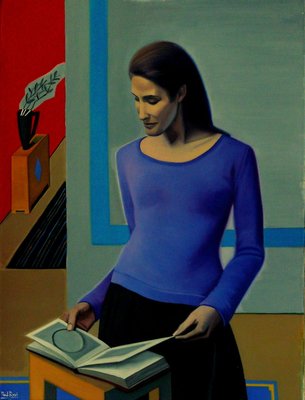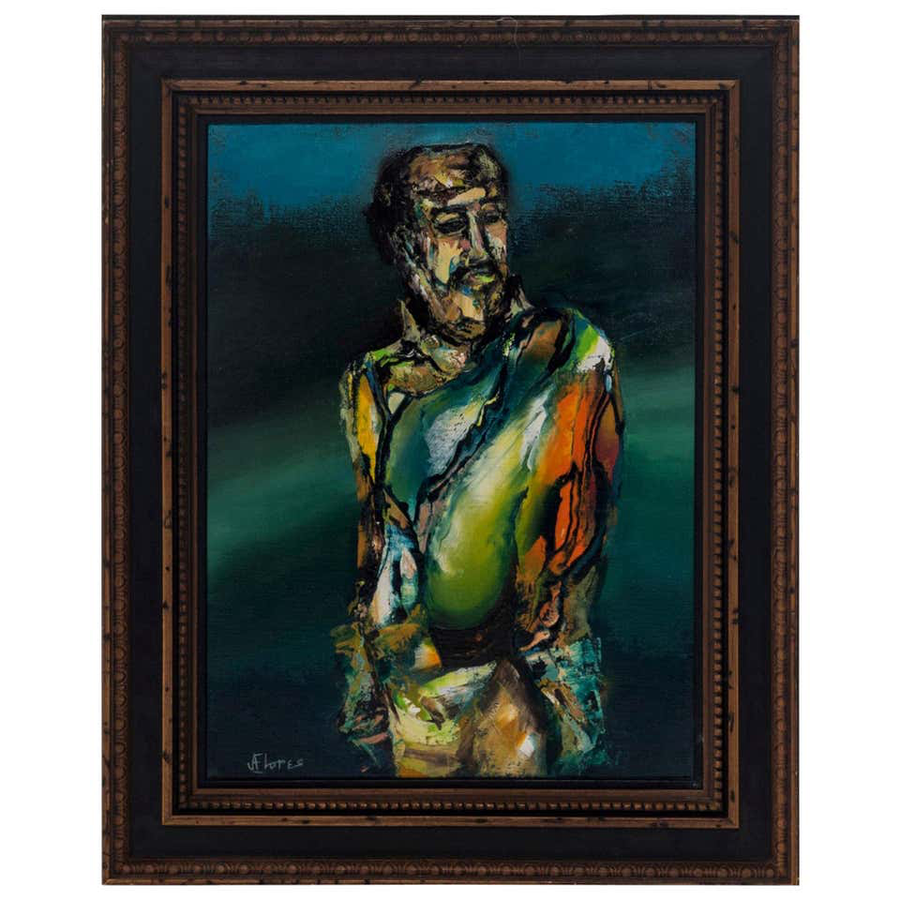The Impact of Figurative Oil Painting on Modern Art and Culture
The Advancement of Figurative Oil Painting: Understanding Its Historical Relevance and Modern Interpretations
The development of figurative oil paint serves as an engaging lens with which to analyze the interplay in between imaginative expression and historic context. Contemporary artists, drawing from this abundant heritage, are now reinterpreting the human number in methods that challenge conventional stories.
Beginnings of Metaphorical Oil Paint
The origins of metaphorical oil painting can be mapped back to the very early Renaissance in Europe, specifically in the 15th century. This duration marked a significant departure from the rigid types and flat depictions characteristic of middle ages art. Artists began to discover naturalism, emphasizing the human number and its psychological expression. The advancement of oil paint permitted higher deepness of color and detail, improving the realistic look and vibrancy of their work.

In this transformative era, numbers were usually depicted within contextually rich environments, showcasing not only their physical characteristics but also their mental states. Pioneers such as Jan van Eyck and Titian took advantage of the tool's convenience, using layering strategies to attain luminosity and texture. This development promoted the portrayal of elaborate fabrics and the subtleties of skin tones, contributing to the development of portrait and narrative scenes.
In Addition, the Renaissance emphasis on humanism fostered an admiration for uniqueness, which in turn influenced musicians to produce more relatable and dynamic numbers - figurative oil painting. Because of this, metaphorical oil painting arised as an effective vehicle for storytelling and emotional involvement, preparing for future imaginative motions and styles
Key Historical Activities
Substantial historic motions have formed the evolution of metaphorical oil painting, each adding unique approaches and techniques that broadened the medium's possibilities. The Renaissance noted a turning point, emphasizing realistic look and the human kind, with artists like Leonardo da Vinci and Michelangelo pressing the boundaries of physiological accuracy and point of view. Following this, the Baroque period brought remarkable contrasts of light and darkness, exemplified by Caravaggio, that infused religious themes with extreme emotionality.
The 19th century introduced Romanticism and Realistic look, where artists such as Delacroix and Courbet tested classic perfects, focusing on private expression and day-to-day life. The introduction of Impressionism further changed the medium by stressing the effects of light and color, bring about a departure from standard depiction.
In the early 20th century, activities like Expressionism and Cubism redefined figurative paint with abstraction and the expedition of emotional deepness. Each of these movements not only showed the social adjustments of their times but likewise prepared for contemporary analyses. The interplay between these historic motions has actually produced a rich tapestry of designs and ideologies, affecting modern musicians in their search of capturing the human experience on canvas.
Methods and Products Evolution

Throughout the Baroque duration, methods such as chiaroscuro and sfumato arised, improving the emotional vibration of figurative compositions. Musicians started to try out glazes and impasto, adjusting appearance and brightness. By the 19th century, innovations like making use of pre-mixed paints in tubes reinvented ease of access, allowing musicians to paint en plein air and record the short lived impacts of light.
The 20th century experienced the introduction of synthetic pigments and mediums, which broadened the combination and altered the consistency of oil paints. The expedition of new application methods, such as palette knives and brushes of differing tightness, more diversified creative expression. Jointly, these advancements show the evolving connection in between materials, methods, and the imaginative vision fundamental in metaphorical oil painting.

Contemporary Interpretations
Contemporary analyses of figurative oil painting show a vibrant dialogue in between practice and technology, where artists challenge developed standards and check out diverse themes. This advancement manifests in various ways, as modern musicians mix timeless methods with contemporary ideas, commonly resolving social, political, and individual stories.
Lots of professionals draw inspiration from historical jobs, yet they instill their pieces with contemporary point of views, using the human form as a vehicle for discourse on culture, gender, and identity. Artists increasingly trying out abstraction, distortion, and mixed media, which allows for a broader analysis of the number and its context.
In addition, using dazzling shade combinations and unique structures commonly offers to interrupt conventional viewing experiences, prompting essential involvement from audiences. This shift in focus expands past looks; it shows an expanding recognition of the intricacies of human experience in an interconnected world.
As figurative oil paint remains to evolve, it remains a vital tool for exploring the subtleties of modern life, embodying both a regard for heritage and a dedication to progressive idea. The result is a rich tapestry of expression that reverberates with the intricacies of the modern human problem.
Influence On Modern Art
The influence of figurative oil paint on modern art is extensive, as it has actually constantly influenced a myriad of imaginative movements and practices throughout the 21st and 20th centuries. From Expressionism to Surrealism and past, the exploration of the human figure has actually continued to be a central style, permitting musicians to convey complex emotions and narratives. This focus on metaphorical representation has resulted in a re-examination of standard strategies, causing cutting-edge strategies that mix realistic look with abstraction.
Furthermore, contemporary artists have embraced figurative oil painting as a way to deal with political and social problems, making use of the tool to test understandings of culture, identification, and sex. The revival of rate of interest in figurative operate in current years shows a hoping for link in a significantly electronic globe, where human experience and feeling are vital.
In addition, the look at here discussion in between figurative oil painting and modern art appears in the works of musicians such as Kehinde Wiley and Jenny Saville, that make use of historic recommendations while instilling their pieces with contemporary relevance. Ultimately, metaphorical oil paint remains dig this to form and redefine modern-day creative expression, highlighting its enduring importance in the art world.
Final Thought
The development of figurative oil painting underscores its historical importance and adaptability across various creative activities. Eventually, metaphorical oil paint remains an important medium for exploring the human experience, resonating profoundly in today's electronic landscape.
The development of metaphorical oil paint offers as a compelling lens via which to analyze the interaction in between artistic expression and historical context.Considerable historic activities have shaped the development of metaphorical oil paint, each adding unique viewpoints and methods that increased the medium's possibilities.As historical motions shaped the trajectory of metaphorical oil paint, the materials and methods used by artists have likewise undertaken significant improvements. figurative oil painting.The influence of metaphorical oil paint on modern art is profound, as it has constantly influenced a myriad of imaginative activities and techniques throughout the 21st and 20th centuries.The development of metaphorical oil paint underscores its historical significance read more and adaptability across numerous artistic movements